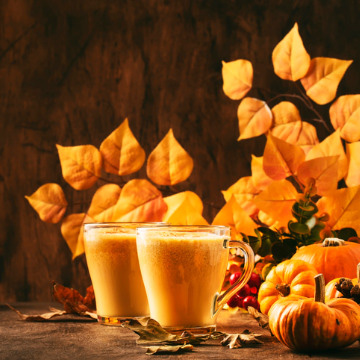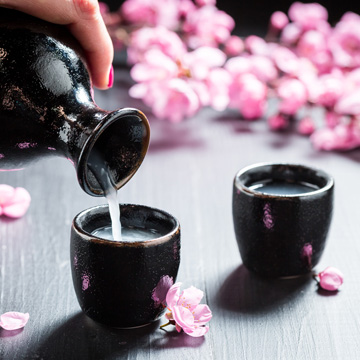
Popular Coffee-Infused Spirits and Liqueurs Perfect for Sipping or Mixing
August 3, 2021
Spiced Cocktails Perfect for Fall
October 4, 2021Hattiesburg, MS
Sake, the traditional Japanese rice wine made in the 8th century, still accompanies Japanese dishes today. Sake can refer to any alcoholic beverage type in Japan, but it refers to conventional rice wine in English. The Japanese call their rice wine seishu or nihonshu, more specifically. So, no matter which you choose, you can enjoy a Japanese culture taste through Sake. Our Lincoln Road Package Store staff share the ultimate guide to Sake and how to enjoy it best. So, when you visit our location at 2800 Lincoln Road, Suite A, in Hattiesburg, MS, you know which Sake is for you.
Making Sake
Sake is a traditional Japanese alcoholic beverage made from polished rice fermentation. Although wine requires sugar and yeast for fermentation, Sake uses fermented rice, water, and koji to transform the rice grains into starch, then sugar. The rice used is robust and hardier than table rice. Additionally, water provides cleansing properties by removing impurities and color but lends a richer sake flavor due to its mineral content. Therefore, quality products are crucial in brewing sake to deliver a delicious flavor.
Sake Types
Sake is a versatile wine served cold or warm and is available in various flavors, such as aromatically dry Sake, cloudy Nigori sake, and sparkling sweet Sake. There are three main sake types: brewing process, ingredients, and rice milling rate. Below, we outline every kind to help you choose your next sake bottle.
The Brewing Process – Companies vary with brewing procedures. However, some well-known examples are Kimoto-sake, which begins with a richer and more refined yeast starter; Nama-sake, an unpasteurized variety; and go-shu, aged Sake.
The Ingredients – The ingredients alter sake flavors from one brand to the next. Bottles labeled with the name Junmai contain only rice with no additives, such as alcohol. With no other additives, Junmai sake harbors a more robust, richer rice flavor. Honjozo is a type where makers can add alcohol to a maximum limit, but the Sake brews the same as Junmai. The most consumed sake type in Japan is Futsushu. Without specific brewing policies or milling rates, makers have increased flexibility when creating their particular Futsu Shu sake recipe.
The Rice Milling Rate – Like alcoholic beverages, Sake has premium products requiring strict adherence to Liquor Business Trade Union Laws. Premium sake classification considers the creation process, milling rate, and ingredients. Out of eight premium sake grades, the three largest categories are:
- Dianginjo sake, high-grade – 70% polished rice
- Ginjo sake, mid-grade – 50% polished rice
- Honjozo sake, low-grade – 30% polished rice
Therefore, choosing a bottle with Junmai-daiginjo means your Sake is a rice-only product polished to 70%. Sake quality follows the percentage polished; the higher the number, the better the quality.
How to Read Sake Labels
Sake bottle labels share information about proper bottle storage, perfect serving temperature, and tasting characteristics to help your purchasing decision.
Three label items to understand are:
- Sake-do – The number designates sake sweetness or bitterness. Positive numbers are more bitter, and negative numbers are sweeter.
- Acidity – The rating determines sake sourness. The closer to 1.4, the sourer the Sake, but once over 1.4, there’s not much taste change.
- Amino Acid Degree – The degree measures amino acids. Numbers higher than 1.4 yields a rich, full-bodied flavor, while numbers below 1.4 have a clean taste and are light-bodied.
Sake Glass Types
Similar to wine, the glass type can affect the overall flavor and Sake experience. Therefore, follow the below guidance to choose the perfect glass to compliment your Sake.
- Masu – Masu, made with hinoki or cedarwood, is a traditional sake glass that adds a clean, woody scent to your sake experience.
- Ochoko – The small ceramic glass can serve warm or cold Sake and allows air to flow into it, enhancing the flavors. Typically, a pottery bottle called a tokkuri serves the Sake to the ochoko.
- Trumpet – The wide lipped glass is best for fruity and floral sakes as the lip provides an easier way to smell the aromas.
- Hirezake – A large glass designed explicitly for hirezake sake to serve hot with a blowfish fin.
Lincoln Road Package Store
Using our ultimate guide to Sake, you can confidently choose a sake that matches your tastes. Feel free to visit our location at 2800 Lincoln Road, Suite A, in Hattiesburg, MS, to peruse our selection for your next Japanese-inspired meal or event. If you have questions about Sake, feel free to call us at (601) 268-3677 or email jamiefarris@gmail.com today.


